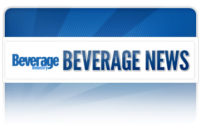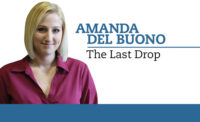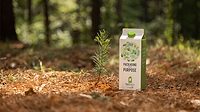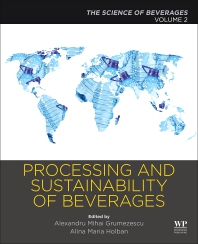Recycling initiatives educate consumers and promote sustainability

Students in Norfolk, Va., participate in the 2011 Recycle-Bowl Competition.


Kona Brewing Co.’s Longboard Island Lager, Real Ale Brewing Co.’s Fireman’s No. 4 Blonde Ale, and Sprecher Brewing Co.’s Root Beer and Special Amber varieties all made the switch to or added aluminum cans to their offerings this year.



Although the concept of recycling might seem simple, with kids in elementary school classrooms being taught the importance of reducing, reusing and recycling, the execution of the concept can be a little bit more confusing.
As people move from city to city, they need to learn about their community’s recycling program, explains Steve Gardner, vice president of communications for The Aluminum Association, Arlington, Va. Consumers often ask, “What day is my trash picked up? Which day is my recycling picked up? Which bins do I need to use? Do I sort my pieces, or do I put it all into one bin?” he says.
For communities that have single-stream recycling, which means that all recyclable products are placed into one bin and sorted in a recycling facility rather than being sorted by the consumer, residents tend to think that their recyclables are simply dumped in with the rest of their trash, Gardner says, which is not the case.
Companies and organizations in all segments of the beverage packaging industry — from aluminum to paper and cardboard to polyethylene terephthalate (PET) — are working to add clarity to these recycling situations.
Curbside Value Partnership (CVP), which began as a joint venture between The Aluminum Association and the Can Manufacturers Institute (CMI), Washington, D.C., works with municipalities to help them increase their recycling rates. By coordinating with a community’s mayor or recycling manager, CVP plans a communications strategy to explain the community’s recycling program to the residents, Gardner says. This can involve anything from leaving fliers to remind residents when their recycling is picked up or helping them find out how to obtain recycling bins for their homes. “We see nice increases in recycling after that,” Gardner affirms.
The Carton Council of North America, a joint venture of carton manufacturers Tetra Pak Inc., Vernon Hills, Ill.; SIG Combibloc Inc., Chester, Pa.; Elopak Inc., New Hudson, Mich.; Evergreen Packaging, Canton, N.C.; and Weyerhaeuser Co., Federal Way, Wash., offers a similar program to increase community recycling, particularly from a paper carton standpoint. At the time of its founding in 2009, access rates to carton recycling were at approximately 18 percent, says Jason Pelz, vice president of environment for Tetra Pak Inc. and vice president of recycling projects for the Carton Council of North America. “Our feeling was that we needed to improve that to drive recovery rates,” he says.
Rather than starting out with the head of local government, the Carton Council takes a different approach. “We’ve found it easier to start with the recycling facilities, because truly they’re the key connecting point that allows consumers sustainable household carton recycling access,” Pelz says. The Carton Council ensures that these groups are equipped to handle carton recycling and then provides them with expertise and financial support in exchange for a commitment to promote carton recycling, he says. Then the Carton Council works with the municipality to educate the residents about the recycling program. “It can be [through] radio/TV, it can be [through] public service announcements, or, as you get into smaller communities, it can be fliers, door hangers, mailers … we have a tool kit,” he says.
These efforts have proved successful. According to Pelz, carton recycling access rates now are at 39.6 percent, nearing the organization’s goal for
40 percent access by the end of the year. “We’ve added almost 6 million new homes this year, which is about a 14.5 percent increase over last year,” he adds. “There’s about another half million houses to go for us to hit the goal of 40 percent.”
Similarly, The Aluminum Association, CMI and the Institute of Scrap Recycling Industries (ISRI), Washington, D.C., announced in August that the U.S. recycling rate for aluminum beverage containers jumped seven percentage points to 65.1 percent for 2011. This means that 61 billion cans were recycled in 2011, which includes imports of used beverage containers from Canada, Mexico and other countries, securing the aluminum can’s position as the most recycled beverage container, the organizations said in a statement.
With results like this, the organizations say they are well on their way to reaching their goal of a 75 percent recycling rate by 2015. “[W]e need the help of every American to continue to raise the rate,” said Heidi Brock, president of The Aluminum Association, in a statement.
“[The] can-to-can loop process happens in as little as 60 days, and if consumers do their part to make sure cans find the way to a recycle bin, those cans will never have to see a landfill,” the organizations said in a statement.
In order to reach these and other recycling goals, organizations need to take note of kinks in the recycling chain, The Aluminum Association’s Gardner says. Bars, restaurants and airlines are not recycling as much as they should be, he says. In addition, some older multi-family homes and apartment buildings are not set up for recycling, and that needs to be fixed as well, he adds. Similarly, rural areas have lower recycling rates because access to recycling is limited and the communities do not always have funds for recycling programs, he notes.
Making recycling exciting
Other organizations are working to expand recycling outside of curbside pick-up and make consumers excited to recycle.
Keep America Beautiful and Nestlé Waters North America teamed up again this year for its second annual Recycle-Bowl Competition. For this free, friendly competition, elementary, middle and high schools around the country are invited to collect and track recyclable material for a chance to win prizes. At the end of the four-week competition, which ends Nov. 9, the school in each state that collects the most recyclable material per capita will win $1,000, with a national champion receiving an additional $2,500 prize, the companies said in a statement.
Last year, more than 1,200 schools with a total of more than 500,000 students participated in this program to learn about waste reduction and environmental responsibility through in-school recycling and via online education and a registration toolkit provided by the contest hosts, the companies say. Sixty-seven percent of the participating schools saw an increase in recycling at their school during the competition, it says.
Keep America Beautiful also is sponsoring America Recycles Day in conjunction with the culmination of the contest. The organization invites local officials to schedule recycling events in their communities on Nov. 15. Keep America Beautiful will provide event hosts with recycling activities, posters printed on recycled paper, banners made of recycled plastic bottles, pencils made of recycled newspaper, buttons made of recycled steel, best practices guides for recycling events and more.
Manufacturers do their part
Recycling requires more than just consumer involvement; manufacturers need to take pre-consumer steps to promote sustainability too, according to experts.
“There’s a big trend among companies [to cut] down inputs into their packaging,” says Deonta Thomas, construction and infrastructure analyst at IBISWorld, Santa Monica, Calif. “That is becoming popular with the bigger organizations, and a bunch of smaller organizations are following suit.”
Tetra Pak, for example, utilizes its Design for the Environment approach, which ensures that new products are designed in such a way that their environmental impacts are understood and minimized, Pelz says.
“We look to see where we can potentially use renewable things,” he says. “For example, in our packages, the fact that at least 74 percent of it is wood, that’s all a renewable resource. But we also look at the caps and the closure and other things to try and identify where we could potentially use recycled content,” Pelz says. Design for the Environment also considers using renewable content and trying to use less material so that the overall packaging weight is less, he says. In addition, Tetra Pak uses Forest Stewardship Council-certified materials, which come from forests that are managed to meet the social, economic and ecological needs of the present and future, he adds.
Tetra Pak also works with some of its clients to find solutions for their packaging and to recycle their products in the event of misprints or misfills, Pelz says. “We look at the whole value chain to make sure that packaging that needs to be recycled is taken care of.”
The aluminum industry also is looking at ways to make their end products more recyclable. Because aluminum can bodies and tops are made of two different metal alloys, which causes some recycling complications, there is a movement within the industry to make the entire can out of the same alloy, The Aluminum Association’s Gardner says. Extending outside of their primary product, the aluminum industry also focuses on cube utilization and packaging efficiency, Gardner says. Because cans are stackable, more cans can fit in a package with less void space, which makes packaging more efficient and reduces the product’s environmental footprint, he says.
These environmental packaging trends also are important to please environmentally minded consumers. According to a 2012 IBISWorld report, demand for products manufactured with recycled goods has been on the rise in the last five years, and that demand is expected to continue increasing during the next five years.
As packaging technology continues to improve, experts say the industry will be able to support consumer demand for more sustainable packaging solutions and come even closer to recycling goals. BI
Looking for a reprint of this article?
From high-res PDFs to custom plaques, order your copy today!












